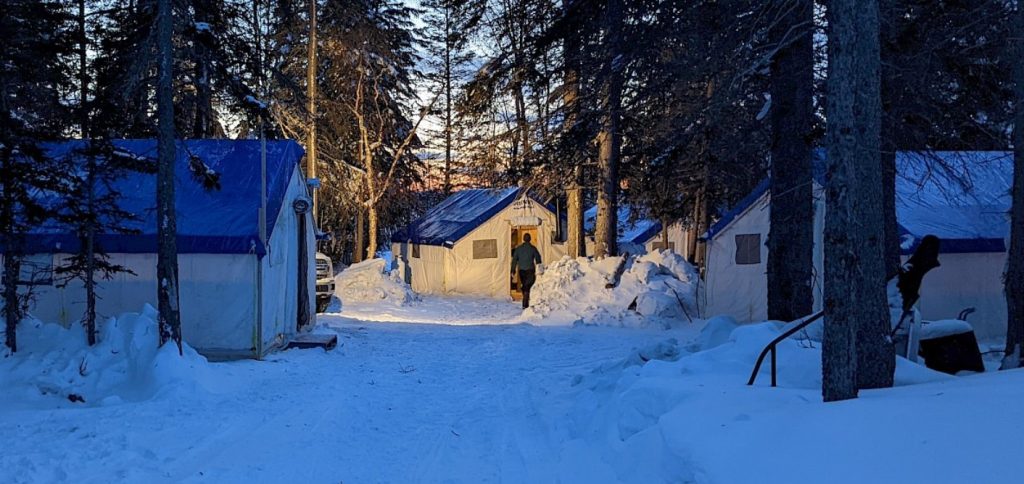Standard Uranium intersects 0.042 wt.% U3O8 at Sun Dog, Saskatchewan

Standard Uranium Ltd. [TSXV-STND; OTCQB-STTDF; FSE-9SU] reported analytical highlights from the winter 2023 drill program at its 19,603-hectare Sun Dog project. Sun Dog is located at the northwestern edge of the Athabasca Basin, Saskatchewan, and is south of the first uranium mining camp in Canada, the Beaverlodge District, near Uranium City.
Key Focus Points: Breccia-hosted uranium mineralization intersected in the first drillhole at the Haven discovery (SD-23-013) grading up to 0.042 wt.% U3O8 over 0.5 mettres.
Analytical data from Sun Dog drilling shows elevated pathfinder elements, while clay mineral spectroscopy confirms presence of significant dravite alteration in Johnston Island drill holes, expanding the alteration footprint to 900 metres x 1,600 metres at the Haven-Walli target area.
Elevated uranium in the basement exceeds thorium values by a factor of 2 or more in multiple intervals, supporting hydrothermal uranium emplacement.
Several high-priority drill targets have been identified for subsequent drilling, targeting high-grade unconformity-related uranium mineralization.
Ten diamond drill holes comprising 1,227.1 metres were completed in March 2023 at the Johnston Bay, Java, Haven, Walli and Stewart Island target areas. The program was designed to follow up on the results of the 2022 drill program, test historical high-grade uranium mineralization, and test for the down-dip extension of mineralized structures mapped at surface.
The results of the program highlight the potential for the property to host significant unconformity-related and basement-hosted uranium mineralization. Sun Dog contains several priority targets to follow up on previous drill hole intersects of uranium mineralization and basement-rooted structures that warrant further exploration. These factors, along with the presence of numerous radioactive mineral occurrences in both basement rocks and the overlying Athabasca sandstone, indicate excellent potential for economic uranium mineralization within the Sun Dog Project area. Additionally, the discovery of an extensive dravite-clay-iron oxide alteration system on Johnston Island which corresponds with elevated radioactivity, further supports the potential for shallow high-grade uranium mineralization.
Sean Hillacre, President & VP Exploration stated, “Intersecting uranium mineralization at depth in our first drill hole at Haven has the team eager to continue drilling this area. Our team and vendors did a fantastic job at Sun Dog despite the challenging winter conditions we faced, and we have significantly expanded the footprint of a robust dravite-clay-iron oxide alteration system on Johnston Island which corresponds with instances of strong radioactivity. The magnitude of the alteration halos and structural disturbance in our targets areas highlights the potential for Sun Dog to host significant high-grade mineralization. We have further refined our exploration strategy and are keen to continue exploring these targets in addition to untested mainland target areas going forward.
“We know from our team’s experience in these styles of deposits both in the Athabasca and the Alligator Province of Northern Australia, that uranium mineralization falls off very quickly as you move away from high grade, economic deposits. Getting elevated uranium hits and significant alteration often diagnostic of mineralization is a very good sign that we’re well in the ballpark of something exciting.”
Drill hole SD-23-012 returned 2.31 ppm uranium in silicified Athabasca sandstone (MFd) within a dm-scale quartz-hematite breccia from 9.25 to 9.40 metres. Elevated uranium was also intersected in drill hole SD-23-006, returning 1.32 ppm uranium in Athabasca sandstone (MFb) with hydrothermal hematite healed fractures, local druzy quartz veins, and sooty pyrite fractures. Uranium concentrations above 1.0 ppm are considered anomalous in Athabasca sandstone.
Drill hole SD-23-013 returned the highest uranium value of 0.042 wt.% U3O8 over 0.5 m (360 ppm U, partial digest) in an oxidized fault breccia hosting clay-dravite alteration. Within the same structure, 0.021 wt.% U3O8 over 0.5 metres (136 ppm U, partial digest), and 0.005 wt.% U3O8 over 1.0 metre (35.2 ppm and 33.2 ppm U, partial digest) was intersected. In the sandstone and basement, elevated uranium exceeds thorium values by a factor of 2 in multiple intervals, supporting hydrothermal uranium emplacement processes.
Standard holds interest in over 187,542 acres (75,895 hectares) in the world-class Athabasca Basin in Saskatchewan, Canada.
Standard Uranium’s Sun Dog project, in the northwest part of the Athabasca Basin, Saskatchewan, is comprised of nine mineral claims over 19,603 hectares. The Sun Dog project is highly prospective for basement and unconformity hosted uranium deposits yet remains largely untested by sufficient drilling despite its location proximal to uranium discoveries in the area.
Standard Uranium’s Davidson River Project, in the southwest part of the Athabasca Basin, Saskatchewan, comprises 10 mineral claims over 30,737 hectares. Davidson River is highly prospective for basement-hosted uranium deposits due to its location along trend from recent high-grade uranium discoveries. However, owing to the large project size with multiple targets, it remains broadly under-tested by drilling. Recent intersections of wide, structurally deformed and strongly altered shear zones provide significant confidence in the exploration model and future success is expected.
Standard Uranium’s Atlantic, Canary, Ascent, Corvo, and Rocas Projects, in the eastern Athabasca Basin, comprise 23 mineral claims over 25,242 hectares.
